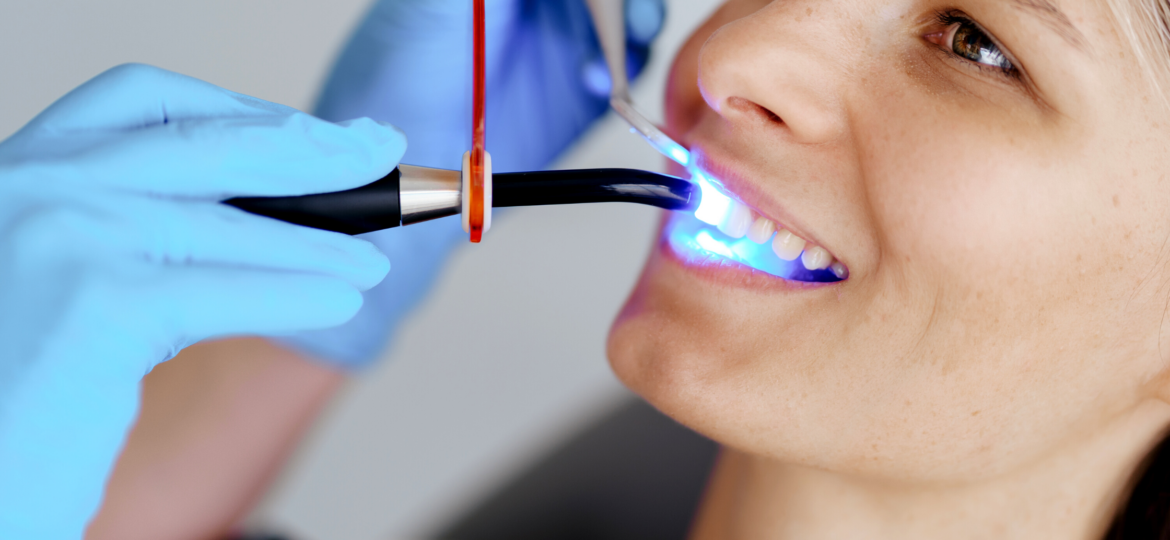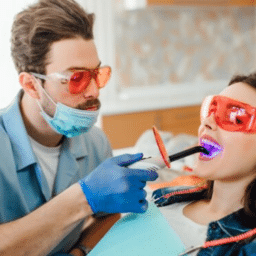
Laser dentistry is a type of cosmetic dentistry that uses light, heat, and/or lasers to smooth uneven edges. This can be used on any surface, including the teeth, nose, ears, and facial bones. If a person has a lot of wrinkles in the skin around their chin or cheeks, this procedure may help smooth those wrinkles.
Laser dentistry has been used for decades. It is a great way to improve the appearance of your smile. Still, the technology has come a long way since the first laser dentistry machine was introduced in the 1960s. Today, many different lasers can help patients improve their smiles and feel more confident about their appearance.
Laser dentistry can help in many ways, including :
- Removing tooth decay.
- Removing gum disease.
- Preventing future gum disease.
- Smoothing the gums and making them less prone to bleeding.
- Removing tartar buildup from the teeth prevents future problems like bad breath and plaque buildup.
- Loosening of teeth so they can be moved back into proper position.
Tooth decay is one of the most common problems in dentistry. It is a process that occurs when bacteria from plaque build-up on the teeth and cause an acid reaction in the mouth, destroying tooth enamel and causing cavities. Tooth decay is caused by plaque, a sticky substance that forms on your teeth if you don’t brush and floss regularly. Plaque contains bacteria, which can survive in your mouth for weeks or even months before they cause problems. The bacteria produce acid as they feed on sugars, proteins and carbohydrates in food left on your teeth. This acid then breaks down minerals found in your tooth enamel, causing it to weaken and crumble away over time. If left untreated, this breakdown of minerals creates cavities. If left untreated for too long, it can lead to other health problems, such as gum disease (gingivitis) or tooth loss.
Gum disease is an oral health problem that can lead to tooth loss and other complications.
Fortunately, there are steps you can take to prevent it.
- Tooth decay occurs when bacteria in plaque leave the mouth and invade the teeth. This process starts with food particles that stick to your teeth and turn into tartar, a complex substance of bacteria and minerals. The acid from your stomach dissolves the mineral side of this mixture, which leaves behind a hole in your tooth.
- The hole allows more food particles to stick to your tooth and turn into tartar. The bacteria in plaque fill up the cavity left behind by demineralization and cause inflammation, which makes it harder for you to chew food properly.
- Dentists often treat gum disease with antibiotics that kill off the bacteria causing inflammation. However, these treatments aren’t always effective against all strains of gum disease-causing bacteria; they might only kill one type while allowing another pressure to flourish.
- There are many reasons why a tooth might crack. One may be that the teeth were not fitted correctly in the mouth. This type of dental malocclusion usually causes pain and discomfort, as well as an abnormal tooth appearance that can result in a loss of confidence and self-esteem.
- Another reason for cracked teeth may be exposed to cold temperatures or prolonged periods without eating. When this happens, your teeth may become sensitive to hot and cold food and drinks, which can cause further damage to your teeth. This can affect your bite and lead to problems like cavities, gum disease and more severe health issues like oral cancer.
- Dental fillings are another common reason for cracked teeth. They are used in place of lost teeth when wholly removed during a root canal or extraction procedure. However, once in place, these fillings are pretty stable and cannot move around within the tooth structure, causing cracks or chips on the surface of the tooth structure itself!
There are many reasons to consider laser dentistry. One of the most common reasons is to restore a worn surface to its original look. If your teeth are showing signs of wear and you want to try out some new designs, laser dentistry can help. Laser dentistry can be used for cosmetic purposes as well as for therapeutic work. Cosmetic work may include whitening or bleaching teeth depending on the colour of your natural tooth enamel. In contrast, therapeutic work involves filling cavities, crowns, and bridges.
Laser dentistry is a new form of cosmetic dentistry that uses lasers to treat teeth. It’s similar to traditional dental work, but laser dentistry uses tiny beams of light to clean and repair cavities instead of using drills and fillings.
Because laser dentistry uses lasers, it’s not just for dental patients who are scared of going under the knife. Anyone who wants their teeth to look great can do them with this technology. You may be surprised by how affordable it can be! If you’re interested in getting laser dentistry done, ask your dentist about it.
If you are interested in getting laser dentistry done, ask your dentist about it. You can also check out the clinics’ websites that offer this type of treatment and see if they offer any discounts or deals.
Your dentist may also have a list of dentists who provide this type of treatment in your area. There are many different types of lasers, so finding one that works for you is essential. If you are interested in laser dentistry, make sure you find a dentist who is trained in this field and has experience with it.
The laser dentistry revolution has been going on for quite some time now. Still, it continues to shake up the status quo in dentistry. Traditional dentists and cosmetic surgeons have historically operated under the assumption that teeth are made of bone, a rigid substance that we certainly understand. But with this new technology, dentists and surgeons are now faced with a limited palette of tooth-coloured materials. As is evident from this article, there’s plenty more that lasers can do than just treat tooth decay and whiten your smile.

